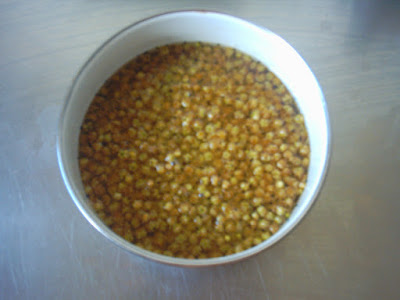Zazaki: kezebe
Maltese: fwied
Lingala: libale
Aymara: k'iwcha
Basque: gibel
Bahasa Indonesia: hati
Nahuatl: Ēltapachtli
Vietnamese: gan
Russian: Пе́чень
Liver is, in my opinion, a food that you love or hate. Contrarily to what you may think about eating liver, it doesn't have to be boring and monotonous. Livers fried in onions; livers mashed with hard-boiled eggs into a breakfast spread; livers stewed in tomato sauce with sweet red pepper slices... and even eaten raw, as liver sashimi. What I didn't know is that there is also a liver soup. Eaten in several regions of Spain (and also Latin America) especially during the slaughter, named originally sopa de hígado; pureed or with liver chunks, tastes really good. The ingredients for 2 portions are the following:
1 - 1 1/2 cups liver (poultry)
3 cups water (some will add 1 cup wine, too)
1 big onion
1 green or yellow pepper
1 garlic clove
3/4 cup yesterday's bread chunks (or rice or thin small noodles*)
1. Prepare liver (cut what has to be cut out) and clean it (I spread it with flour and pepper and then I wash it - to reduce the smell). Cut into small pieces and fry 5-10 minutes while stirring.
2. Pour water over fried liver and bring to boil.
3. Chop onion and pepper and fry. Add to the soup. Control the softness of liver. When almost soft, add bread chunks. Cook a bit more and liquidate the soup. Bread chunks will make the soup thicker and velvety. But you can also add rice or noodles. You can reserve some liver chunks to serve on the top of the soup or you may cook the liver and set fried vegetabels aside and sprinkle them over the soup before serving. You can sprinkle the soup with chopped scallions or parsley. Some people add almonds to the soup and cook and grind them together with the liver, some people don't puree the soup but just leave liver chunks - the coise is yours :) My soup (liquidated, with some chopped liver and scallions on the top) looks like this:






































